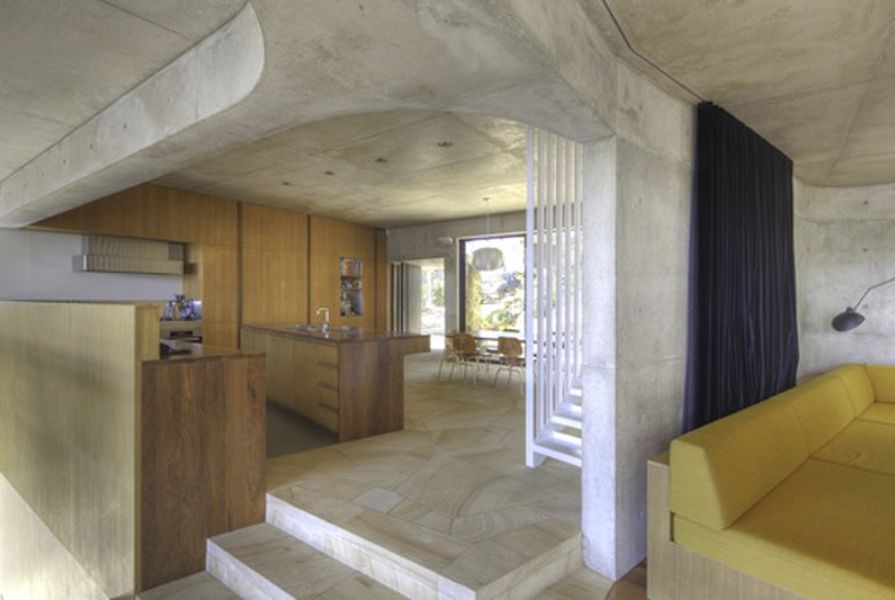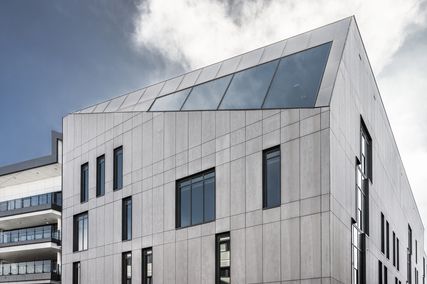Sydney is now the sixth-most expensive city in the world, having shot up from number thirty-two only two years ago. Prices may have risen, but so has the average income. So it was cause for alarm that talking to architects at the 2011 NSW Architecture Awards, I found many seemed to harbour some angst.
Isn’t Sydney the world’s paradise ‘alpha’ city? On the surface, it’s dazzling, with its much-lauded harbour views and undulating sites. This was evident on the awards night in the residential categories. No other Australian city has a pool of architects who can combine a palette to create rich spaces better than Sydney architects: mck, Chenchow Little, Neeson Murcutt, Durbach Block Jaggers and Tribe.
Yet political commentary overshadowed this veneer at the awards. Victorian Awards hostess Virgina Trioli this year took a couple of wry pot shots at the current architect-cum-premier Ted Ballieu in the audience. In Sydney, infrastructure and planning minister Brad Hazzard was on the receiving end.
NSW chapter president Matthew Pullinger, in his introduction to the President’s Award given to NSW government architect Peter Mould, highlighted the importance of architects in designing a city. This role has been much maligned in Sydney’s recent past (for further discussion, see various articles on the Barangaroo development in Architecture Australia, May/June 2010). The jury citation for the President’s Award stated, “it is … an unconditional endorsement of the position of the NSW Government Architect at a moment when fearless design advice to government is so important.”
Over in Adelaide, SA government architect (for the Integrated Design Commission) Ben Hewett presented a positive position at Flux, the congress for Australian and New Zealand architecture students: “Adelaide: There is no crisis.” In his lecture, he highlighted the integrated design approach of the City of Adelaide and its surrounding councils, where shaping the city through setting out streets is replaced by architectural advocacy. “The problem is people do not know what the fuck architects do,” Hewett said. His goal, to forward a collaborative process to advance quality design. By advocating the role of the architect among other city placemakers (property developers, engineers, consultants, and politicians) in deciding the future of the city, bigger questions are asked. The question of what kind of future we want replaces the one of how much one is prepared to spend on the future.
Hewett reiterated the importance of advocating architecture by recounting a story of a politician who stopped him in the corridor one day and suggested that architects were responsible for all of the failed council estate towers of the 1960s and 70s. Ian McDougall of ARM responded by calling out from the audience a list of architectural successes that are too oft-forgotten: infill housing, adaptable housing, sustainable design, and medium-density housing. Peter Mallatt of 6º interjected, saying someone designed the Opera House, too!
The call for architecture advocacy is nothing new. Post-conference, Melonie Bayl-Smith of Liquid Architecture pointed towards an AIA media release from September 1998, where the Institute demanded “a vision for the future of the architecture profession that moved it away from the public perception of architects as prescribers of ‘style and aesthetics,’ and towards a focus on ‘the core capabilities of architects, their ability to think creatively and to apply knowledge to the resolution of complex ill-defined problems relating to the built environment … It facilitates divergent thinking, an understanding of process in a complex environment of change and the subsequent integration of diverse knowledge and requirements into creative solutions.”
While conversations at the student congress, and the profession, go in circles, there must come a time to shift out of the feedback loop and change gears from critic to advocate, and from advocate to activist. The Integrated Design Commission in Adelaide, as advocate, shows one way forward.
Read the thinking behind the IDC approach.

















